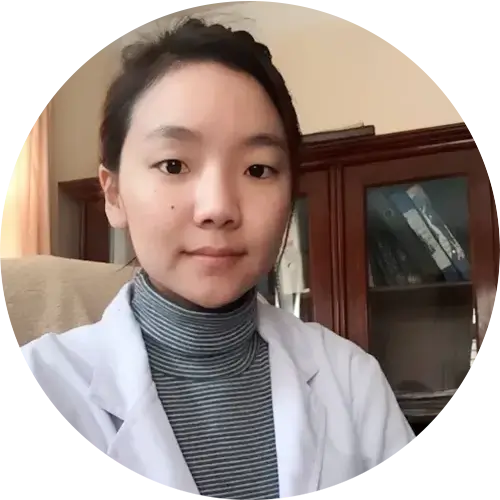SI Joint Dysfunction: An Overlooked Cause of Lower Back and Referred Leg Pain

Medically Reviewed by Dr. Sony Sherpa, (MBBS)
Persistent lower back or hip pain can be a deeply frustrating experience, especially when answers seem elusive. One often-overlooked cause of such pain is Sacroiliac (SI) Joint Dysfunction. The sacroiliac joints link the spine to the pelvis. Diagnosing SI joint dysfunction can be challenging, largely because its symptoms overlap with other common conditions. For many, living with undiagnosed SI joint pain leads to years of trial-and-error treatments, emotional strain, and physical limitations. An increased understanding of this condition, from anatomy to treatments, can help patients and healthcare providers better manage and resolve its frustrating symptoms.
Though exact numbers vary, SI joint dysfunction is thought to account for 15-30% of all cases of lower back pain. It is more prevalent in women, especially during and after pregnancy, owing to hormonal shifts and changes in pelvic alignment. Athletes and individuals with certain medical conditions, like Ehlers-Danlos Syndrome (EDS), are also at heightened risk.
Understanding the SI Joints
The sacroiliac joints are two sturdy joints where the sacrum (the triangular bone at the spine’s base) meets the ilium bones (the large, wing-like bones of the pelvis). These joints are small but mighty, responsible for channeling the weight and forces of the upper body to the hips and legs.
Functionally, the SI joints act as shock absorbers and stability anchors. They allow only minimal movement, just a few millimeters to degrees, to balance flexibility and stability. Their limited mobility is maintained by a strong network of ligaments and supporting muscles. Any disruption to this delicate balance can result in dysfunction and pain.
What is SI Joint Dysfunction?
SI joint dysfunction occurs when the joints either move too much (hypermobility) or too little (hypomobility), disturbing the normal load-bearing functions. Pain can arise within the joint itself due to inflammation (joint inflammation) or irritation, or may radiate into surrounding muscles, ligaments, and nerves.
SI joint dysfunction is often driven by mechanical problems rather than structural damage. It is about how the joint moves rather than what it looks like on imaging.
Causes and Risk Factors
Common causes include:
- Trauma (e.g., falls, accidents)
- Pregnancy and childbirth
- Leg length discrepancy
- Prior spinal surgeries
- Inflammatory conditions like ankylosing spondylitis
- Repetitive stress from activities like running or climbing stairs
- Hypermobility syndromes like Ehlers-Danlos Syndrome
SI Joint Dysfunction Symptoms
The primary symptom of SI joint dysfunction is pain in the lower back and hips, frequently localized to one side. This discomfort may extend into the buttocks, groin, or even down the thighs, mimicking sciatica or a herniated disc.
Patients frequently report:
- Pain while standing, walking, or climbing stairs
- Increased discomfort when sitting for long periods
- Difficulty sleeping on the affected side
- Pain worsening when moving from sitting to standing
Biomechanical Compensations
When one SI joint is dysfunctional, the entire body adjusts. Compensatory movements in the spine and pelvis can cause secondary problems like:
- Low back strain
- Hip pain
- Knee problems
- Opposite-side (unaffected side) joint overuse
- Achilles tendinitis
- Hamstring tightness
- Numbness and tingling in the outer thigh and calf
These compensations can perpetuate the pain cycle.
What Aggravates Sacroiliac Joint Dysfunction?
Certain activities worsen symptoms:
- Sitting or standing too long
- Heavy lifting
- Twisting motions
- High-impact sports
- Walking up and down stairs
Complications can include chronic joint disorders, muscular imbalances, and persistent pain and stiffness.
Diagnostic Challenges
Diagnosing SI joint dysfunction is complex due to several reasons:
- Overlapping Symptoms: Symptoms mimic lumbar spine problems, hip pathologies, or nerve issues.
- No Gold Standard Test: No single test definitively diagnoses SI joint dysfunction.
- Variability in Presentation: Pain locations and severities differ from person to person.
- Attributing Pain to Other Structures: Providers may initially suspect herniated discs, piriformis syndrome, or sciatica.
- Lack of Awareness: Even among healthcare professionals, SI joint dysfunction can be overlooked.
- Pelvic Complexity: The pelvis is a dense anatomical area with numerous structures.
- Inconsistent Treatment Response: Some patients do not respond predictably, adding to diagnostic uncertainty.
Getting the Right Diagnosis and Finding Relief
Medical History
The diagnostic journey starts with a detailed history of symptoms, previous injuries, pregnancies, and activity levels.
Physical Examination
Doctors perform specific provocative tests designed to stress the SI joints:
- FABER Test (Flexion, Abduction, and External Rotation)
- Patrick’s Test (similar to FABER, looks for groin or buttock pain)
- Gaenslen’s Test (torques the pelvis)
- Thigh Thrust Test (applies posterior force through the femur)
- Compression Test (compresses the pelvis side-to-side)
Three or more positive tests increase the likelihood of SI joint dysfunction.
Imaging
MRIs or X-rays help rule out other conditions like ankylosing spondylitis or fractures but often appear normal in SI joint dysfunction.
SI Joint Injections
A fluoroscopy- or CT-guided diagnostic injection involves placing a local anesthetic into the joint. Significant pain relief afterward supports the diagnosis.
Key Differentials and Overlapping Conditions
Several conditions mimic SI joint dysfunction:
- Ankylosing Spondylitis and SI Joint Dysfunction: Ankylosing spondylitis, an inflammatory disease, often targets the SI joints early, causing morning stiffness and pain.
- Sacroiliitis vs. SI Joint Dysfunction: Sacroiliitis refers specifically to joint inflammation, often from infection or autoimmune disease, whereas SI dysfunction relates to pain and discomfort due to mechanical issues.
- SI Joint Dysfunction vs. Herniated Disc: Herniated discs cause nerve compression and radiating leg pain; SI joint dysfunction pain is comparatively more localized and not caused by nerve compression.
- SI Joint Dysfunction vs. Piriformis Syndrome: Piriformis syndrome compresses the sciatic nerve mostly in the deep gluteal space and around the piriformis muscle, causing leg pain, whereas the symptoms of SI dysfunction are mainly due to mechanical dysfunction of the joint.
- SI Joint Dysfunction vs. Sciatica: Sciatica stems from lumbar nerve root irritation, while SI joint pain is musculoskeletal.
Treatment
Treatment for sacroiliac (SI) joint pain typically follows a stepwise approach, beginning with conservative options and moving toward more invasive solutions only when necessary. Early intervention is vital to prevent this condition from becoming a chronic source of disability and frustration.
Conservative Management
First-line therapies are non-invasive and aim to restore joint stability, improve biomechanics, and alleviate inflammation:
Physical Therapy
Physical therapy often forms the bedrock of SI joint pain treatment. A qualified therapist will develop a personalized plan emphasizing core stability, pelvic alignment, and strengthening the muscles that support the SI joints. Exercises typically target the deep abdominal muscles, glutes, and lower back to support the pelvis and reduce mechanical stress on the joint. Flexibility training for tight muscles, such as the hip flexors and hamstrings, is also critical to minimize asymmetrical forces across the pelvis.
Pain Management with Medications and Thermal Therapies
Nonsteroidal anti-inflammatory drugs (NSAIDs) are commonly recommended to reduce joint inflammation and provide pain relief. For many patients, combining medication with heat therapy (to relax tense muscles) or cold therapy (to reduce swelling) can enhance comfort during the healing process. Alternating heat and ice is sometimes advised, depending on symptom patterns.
SI Joint Braces
In certain cases, an SI joint belt or brace can be extremely helpful. These braces provide external support to the pelvis, limiting excessive movement of the SI joints during activities such as walking, climbing stairs, or standing for prolonged periods. By promoting better alignment and stability, braces may relieve pain, particularly during the acute phase.
Manual Therapy
Manual techniques such as chiropractic adjustments or osteopathic manipulations can also offer relief. These hands-on approaches aim to correct misalignments, restore normal joint motion, and release tight muscles that may be contributing to abnormal biomechanics. However, manual therapy should be performed by trained professionals who understand the unique anatomy and mechanics of the SI joints to avoid exacerbating the problem.
Overall, many patients experience significant improvements with these conservative strategies, especially when interventions are consistent and tailored to individual needs.
Minimally Invasive Procedures
If symptoms persist despite conservative care, minimally invasive procedures may be considered, such as:
Radiofrequency Ablation (RFA)
This procedure applies radio wave–generated heat to "burn" small portions of the sensory nerves that carry pain signals from the SI joint to the brain. By interrupting these nerve pathways, RFA can significantly reduce or eliminate pain for an extended period, sometimes lasting up to a year or longer. It is usually performed under local anesthesia with imaging guidance for precision.
Steroid Injections
Corticosteroid injections into the SI joint deliver strong, targeted anti-inflammatory relief. These injections are usually administered under fluoroscopy (live X-ray) or ultrasound guidance to enable precise placement. Steroid injections can rapidly decrease swelling, reduce pain, and improve mobility, giving patients a window of opportunity to re-engage in physical therapy and strengthening exercises. However, the relief they provide is often temporary, and repeated use may be restricted due to potential side effects.
Both of these options serve as bridges between conservative care and more permanent interventions, aiming to restore quality of life without the need for surgery.
Surgical Fusion
In cases where SI joint pain persists beyond six months of appropriate, non-surgical treatment, surgical intervention may be considered.
SI joint fusion is a procedure that permanently stabilizes the joint by promoting bone growth across the SI joint space, typically using implants or screws to hold the bones together during healing. By eliminating the painful micromotion in the joint, fusion often results in substantial and lasting pain relief.
Advancements in minimally invasive surgery have made SI joint fusion safer and less invasive, with many patients returning to their normal routine within a few months. Nevertheless, surgery carries inherent risks, including infection, nerve injury, and the possibility of adjacent joint strain due to altered biomechanics. Therefore, surgical fusion is reserved for patients who have exhausted all other options yet experience insufficient relief.
Stem Cell Regeneration and Biologics
Emerging regenerative treatments offer exciting new possibilities for healing SI joint dysfunction at a cellular level.
Stem Cell Therapy
This method involves injecting stem cells, often derived from the patient’s own bone marrow or adipose tissue, directly into the SI joint. The aim is to harness the regenerative power of these stem cells to repair damaged tissues, restore normal function, and naturally reduce inflammation.
Platelet-Rich Plasma (PRP) Therapy
PRP therapy delivers a concentrated injection of the patient's own growth factor-rich platelets directly into the SI joint. These growth factors can stimulate tissue repair, reduce inflammation, and potentially improve joint health without the side effects associated with steroids or the risks of surgery.
While early research and small clinical studies show promising results for these biological therapies, they are still considered investigational. Long-term effectiveness, optimal protocols, and insurance coverage remain under active study. Patients interested in regenerative medicine options should seek treatment through reputable clinics or academic centers specializing in musculoskeletal disorders.
Exercises for SI Joint Dysfunction
Exercise can help restore stability and function, but guidance is crucial. Before starting, consult a physical therapist or physician.
Beneficial exercises include:
- Single knee-to-chest stretch
- Pelvic tilts
- Glute bridges
- Hip adduction and abduction strengthening
- Figure-4 stretches
Exercises to Avoid with SI Joint Dysfunction
Avoid:
- High-impact activities (running, jumping)
- Deep squats
- Asymmetrical movements without supervision
Latest Research
Recent studies emphasize the role of muscle imbalances in perpetuating SI dysfunction. Early intervention focusing on strength, flexibility, and body mechanics shows promising outcomes.
Another emerging area involves improved imaging techniques and artificial intelligence-assisted diagnostics to better differentiate SI dysfunction from other lumbar and hip conditions.
FAQ
Can SI Joint Dysfunction Cause Bowel Problems?
Though rare, severe SI joint dysfunction can irritate pelvic nerves, sometimes impacting bladder or bowel function. This requires urgent evaluation.
Is SI Joint Dysfunction Permanent?
No, with proper treatment, including physical therapy, injections, or surgery, most people experience significant or complete relief.
Can Ehlers-Danlos Syndrome Cause SI Joint Pain?
Yes, EDS causes ligament laxity, making SI joints more prone to hypermobility and dysfunction.
Can an SI Joint Cause Pudendal Nerve Pain?
Yes, SI joint instability can alter pelvic alignment and indirectly compress the pudendal nerve, causing pelvic pain, numbness, or dysfunction.
To search for the best Orthopedics Healthcare Providers in Croatia, Germany, India, Malaysia, Singapore, Spain, Thailand, Turkey, the UAE, UK, and the USA, please use the Mya Care search engine.
To search for the best healthcare providers worldwide, please use the Mya Care search engine.
The Mya Care Editorial Team comprises medical doctors and qualified professionals with a background in healthcare, dedicated to delivering trustworthy, evidence-based health content.
Our team draws on authoritative sources, including systematic reviews published in top-tier medical journals, the latest academic and professional books by renowned experts, and official guidelines from authoritative global health organizations. This rigorous process ensures every article reflects current medical standards and is regularly updated to include the latest healthcare insights.

Dr. Sony Sherpa completed her MBBS at Guangzhou Medical University, China. She is a resident doctor, researcher, and medical writer who believes in the importance of accessible, quality healthcare for everyone. Her work in the healthcare field is focused on improving the well-being of individuals and communities, ensuring they receive the necessary care and support for a healthy and fulfilling life.
References:
Featured Blogs



